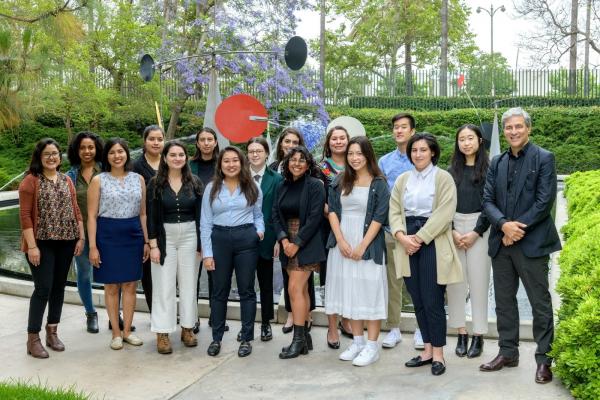LACMA recently hosted its fifth Mellon Summer Academy, a one-week, immersive experience in the museum where 15 undergraduate students are exposed to career options related to art and art history. The Summer Academy is a component of the Andrew W. Mellon Undergraduate Curatorial Fellowship Program, which is generously supported by The Andrew W. Mellon Foundation.
Each Summer Academy includes workshops, tours, field trips, and networking events with museum professionals. While meeting staff from a variety of departments and spending time with curators in their offices and on tours in the galleries, the students worked on their own curatorial projects based on photographs from LACMA’s Marjorie and Leonard Vernon Collection. The 15 students were divided into three groups of five to co-curate their own virtual exhibition, and a current Mellon Undergraduate Curatorial Fellow or alumna was an advisor to each group, enabling the participants to spend time with an individual who is in the next phase of the program.

A highlight of the week was a field trip to explore other organizations around Los Angeles. This year we started at the Charles White Elementary School gallery to meet Ian White, artist and Charles White’s son, and Paulina Alvarez, Community Engagement Assistant at LACMA, to experience the exhibition Life Model: Charles White and His Students. We then met with Nicolas Orozco-Valdivia (2014–16 Mellon Undergraduate Curatorial Fellow at LACMA) at the Armory Art Center in Pasadena to discuss his fellowship experience and how he’s navigated a career path in the arts. Next, we went to USC’s Pacific Asia Museum to tour Tsuruya Kōkei: Modern Kabuki Prints Revised & Revisited and the permanent collection galleries with assistant curator, Rebecca Hall. Finally, we ended the day with Carolina Miranda of the Los Angeles Times and had a dinner conversation around how journalists cover the arts.
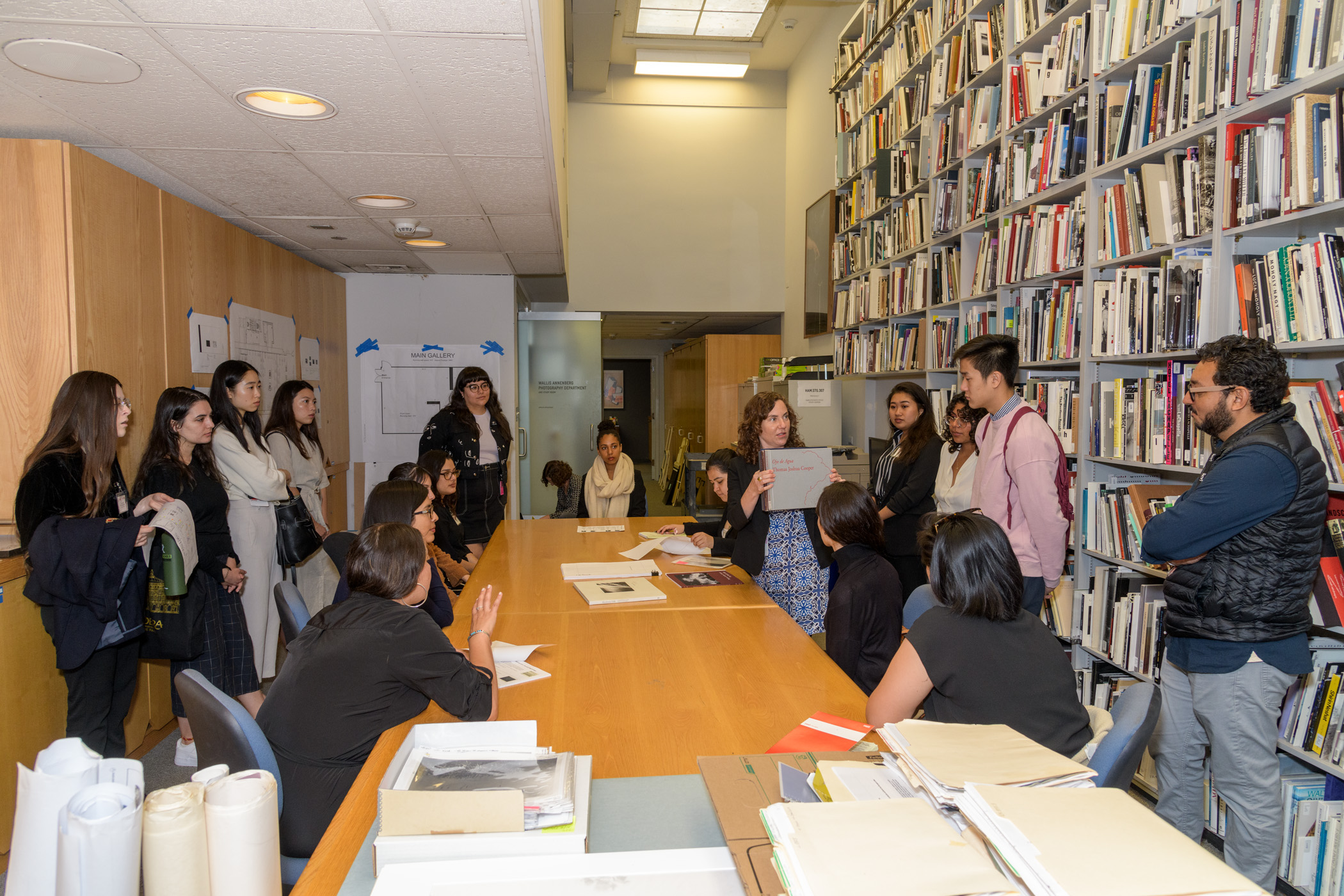
In addition to considering the photographs for their virtual shows and organizing them around a theme or story, each group researched the artists and photos they picked and wrote gallery text for their exhibition. They selected two key images for promotional purposes to market their show and wrote object labels for these photographs. Next, they were given a scaled model of a gallery space and scaled images of their selected photographs to determine how to install their permanent collection rotation. Then, they planned how to engage with museum audiences to attract them to the exhibitions. On the final day of the program each group of students presented their exhibition idea to the museum’s director, the donor’s family, and staff.
Here are the three exhibitions the students proposed:
I Too, Have Played in the Mud: Photographs of Womxnhood From The Vernon Collection
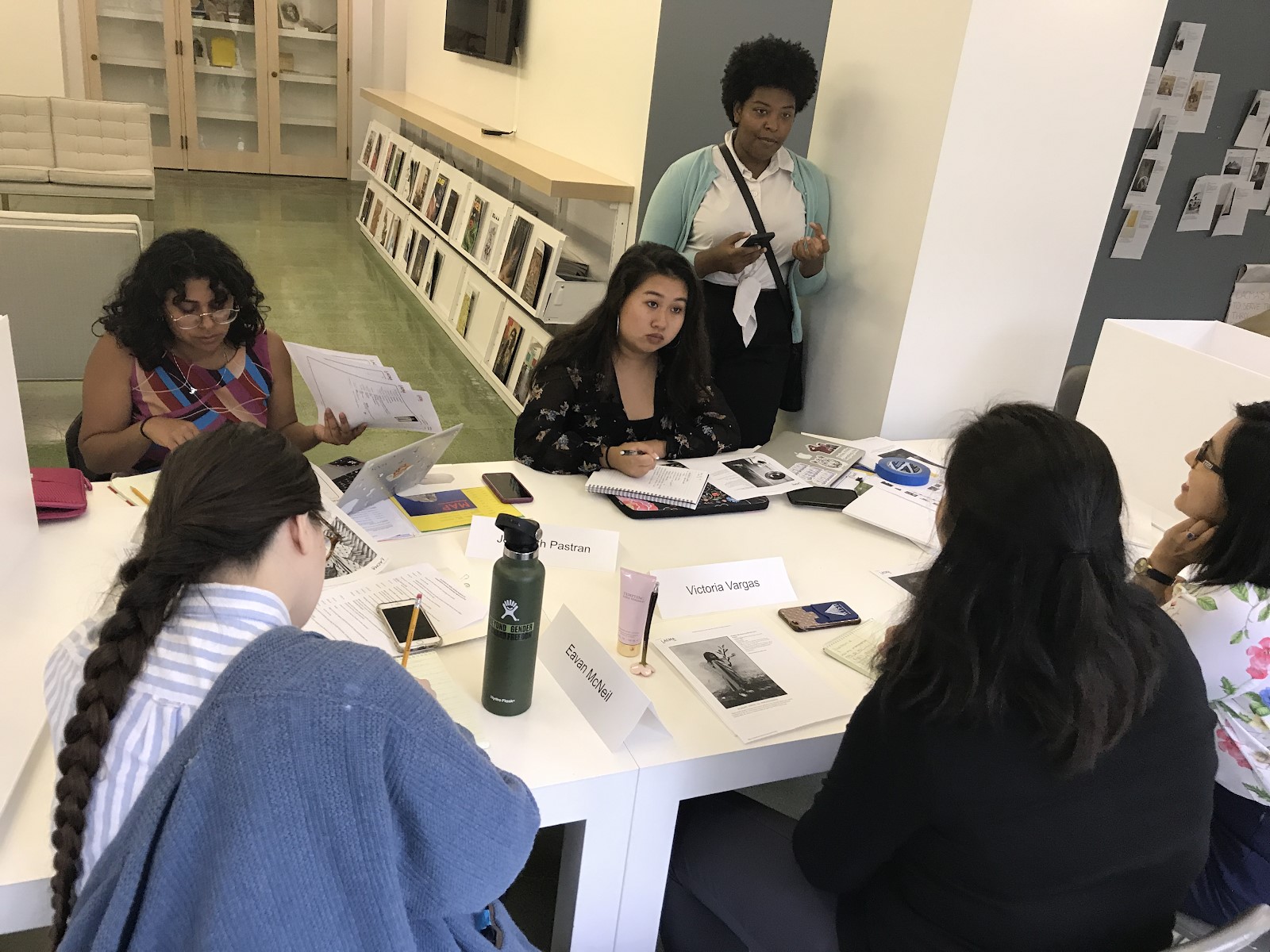
The emergence of photography expanded the possibility of artistic expression and the range of people who could participate in artistic production. Historically, fine arts academies excluded womxn* and people of color from art training. This new technology created accessibility in the arts and led to the rise of new artistic voices. From these new voices emerged unique subject matter, inventive compositions, and different perspectives. This exhibition acknowledges that cultural shift and features a majority of womxn photographers and includes artists of color.
This exhibition contemplates female representation as a site for subverting gender expectations by specifically drawing attention to womxn and children. Although many have been socially conditioned to think of womxn and children in terms of fragility and vulnerability, the works featured in this exhibit instead examine qualities of strength, agency, and independence. These ideas are exhibited through the exploration of the journey from childhood to womxnhood. Presenting these photographs within the three narrative stages of childhood, transition, and womxnhood, the dynamism demonstrated by the freedom from gender expectations is revealed.
*Womxn: This spelling of the word “‘woman”’ is inclusive of trans womxn and other gender identities historically excluded from recognition.
Challenging Intent: Selected Images from the Vernon Collection
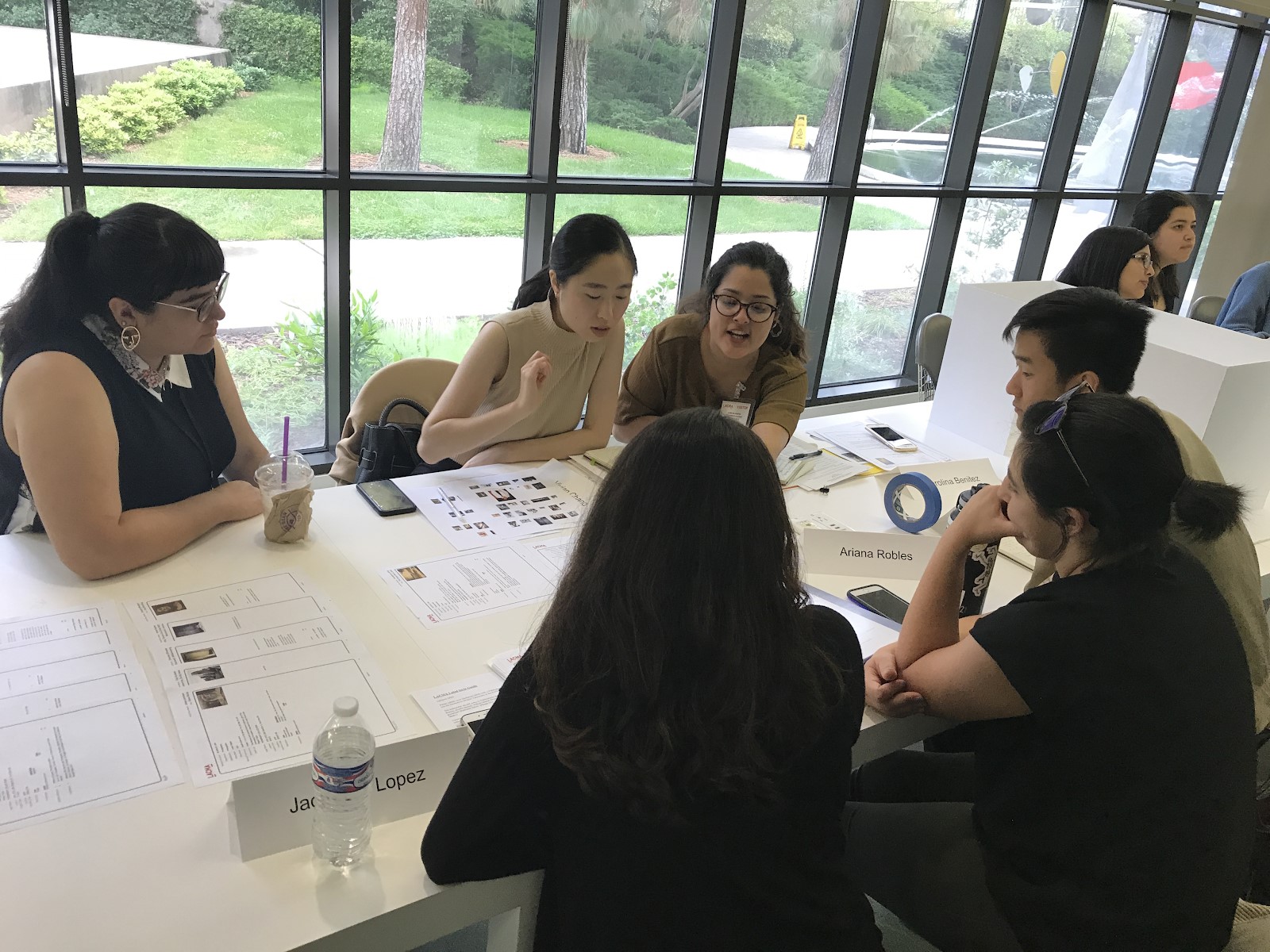
In the early 20th century, photography underwent an ideological shift in style, departing from the then-popular mode of Pictorialism and into a new age of Modernist photography. In this emerging genre, images for the sake of beauty were abandoned for literal documentation of reality. This shift was particularly important to the Group f/64, a collective of West Coast photographers whose manifesto proclaimed, “...the Group will show no work at any time that does not conform to its standards of pure photography. Pure photography is defined as possessing no qualities of technique, composition or idea, derivative of any other art form.”
Key American artists of this theoretical shift—such as Man Ray and Berenice Abbott, along with Group f/64—are prominently featured in this exhibition. Challenging Intent questions their strictly literal images by exploring the mystery and intrigue therein. Human nature prompts us to explore this otherworldliness in a range of spaces—including natural, urban, and domestic environments. This intimate selection of photos provokes a human desire for answers, missing narratives, and the unknown.
Where Have We Been, Where Are We Going
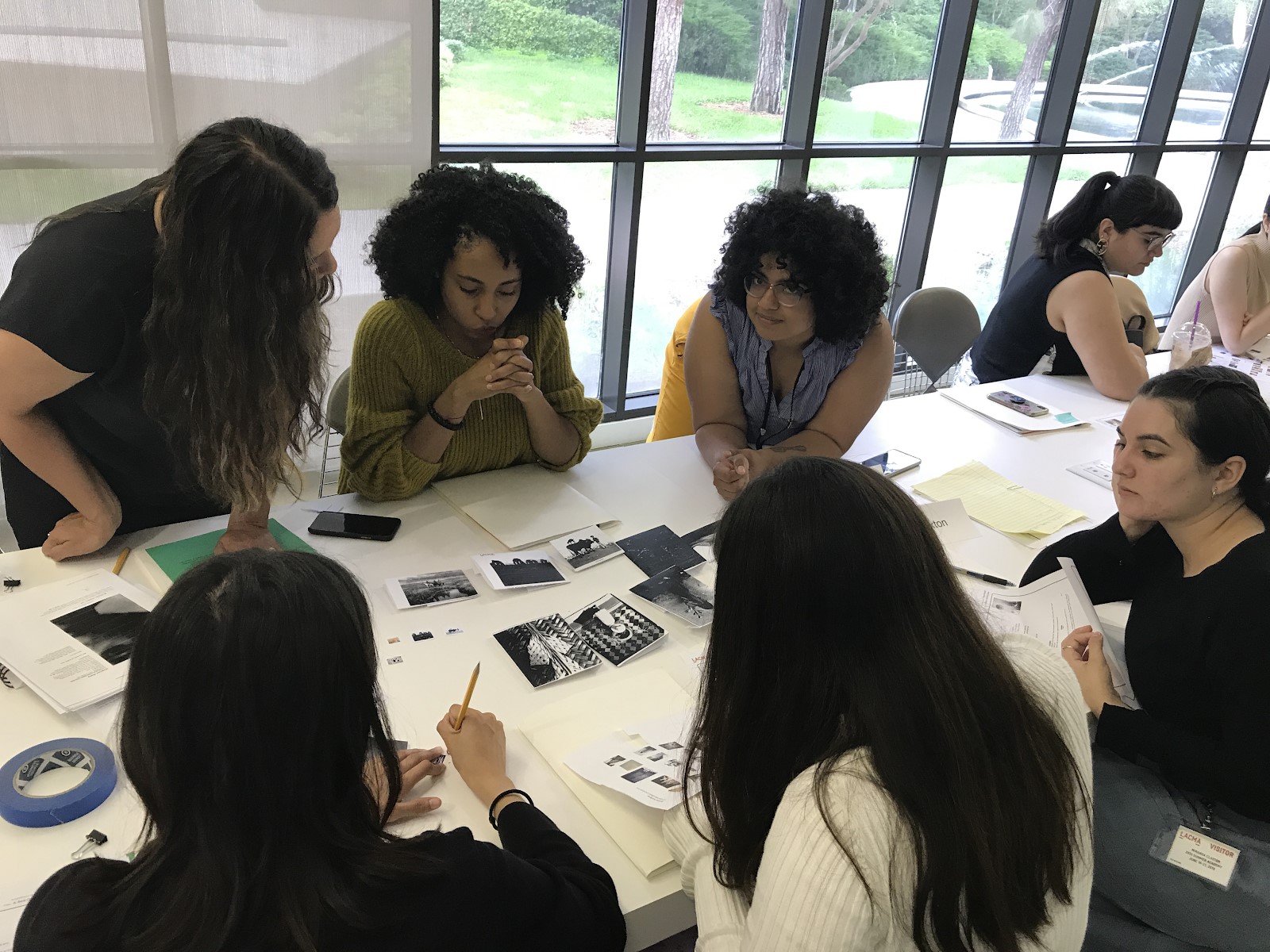
The movement from pre- to post-industrial is generally labelled as progress, but progress in and of itself is subjective in measurement and criteria. An “onward and upward” attitude often regarded by conventional wisdom as optimal, holds fallacies in its relationship to ecology, economy, and social structure. Where Have We Been, Where Are We Going is a selection of photographs from the Vernon Collection that showcases these changes. The use of light and shadow, perspective and texture, highlights the disconnection between development and advancement. The selections range from Edward Sheriff Curtis in the early 1900s to John Pfahl in the late 1980s. The Americas are conveyed in many different moods throughout pairings of photographs, prompting conversation between them in order to contemplate a continually mutating world.
Testimonials from participants in the 2019 Summer Academy:
“The Mellon Academy at LACMA was a week of extraordinary bliss for me as we shuffled around museum galleries and insider spaces with museum professionals. The program validated my dreams of working in an art institution such as LACMA and provided me with strategies in organizing both my professional and educational experiences in order to eventually enter the art world as a curator. Lastly, I will never forget my joy in being able to share this experience with peers who have been working just as hard as I have to carve a place out for themselves in the art world.”—Helen Pinto
“The Mellon Summer Academy at LACMA further enriched my understanding of what it means to be a curator and the importance of that role. It also opened my eyes to the other various, yet equally important, positions within a museum as well, positions I did not even know existed.”—Emily Le
“The Mellon Summer Academy was not just an insightful look into the museum world; it was an invaluable opportunity to explore and engage a role that I never thought would be accessible to me as a student. The program reinforced that my academic and career goals are best suited for curatorial work, and fortified my passion for art, archaeology, and art history.”—Jackeline Lopez
The Andrew W. Mellon Undergraduate Curatorial Fellowship Program, established in 2013, provides specialized training to students across the United States from historically underrepresented groups in the curatorial field who support the goal of promoting inclusive, pluralistic museums. The fellowship seeks to make a critical impact on American art museums by developing gifted curators who are committed to engaging the full spectrum of museum audiences. The Program occurs at six partnering institutions: The Art Institute of Chicago; the High Museum of Art, Atlanta; LACMA; the Museum of Fine Arts Houston; the Nelson-Atkins Museum of Art, Kansas City; and the Philadelphia Museum of Art. Each of the six partner museums will offer a Summer Academy in 2020. Next, LACMA, similar to each partner museum, will be selecting two students from the recent Summer Academy as the 2019–21 Mellon Undergraduate Curatorial Fellows. Please check LACMA’s website for details about the fellows and the 2020 Summer Academy.
In the coming weeks we will be sharing an in-depth look at each of the three exhibitions proposed by the participants in the 2019 Mellon Summer Academy. Check back to learn more!



